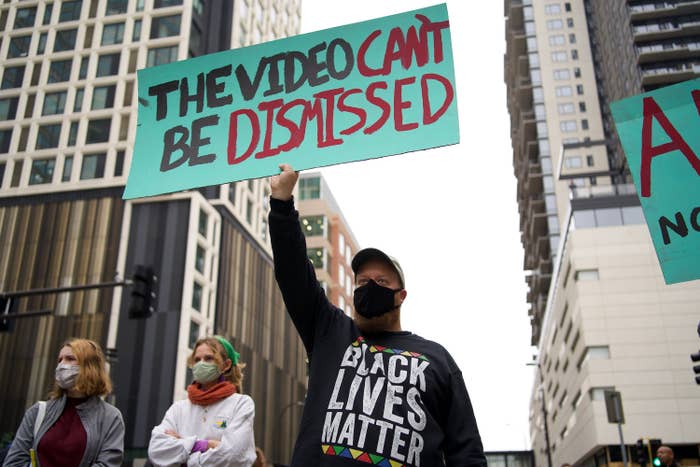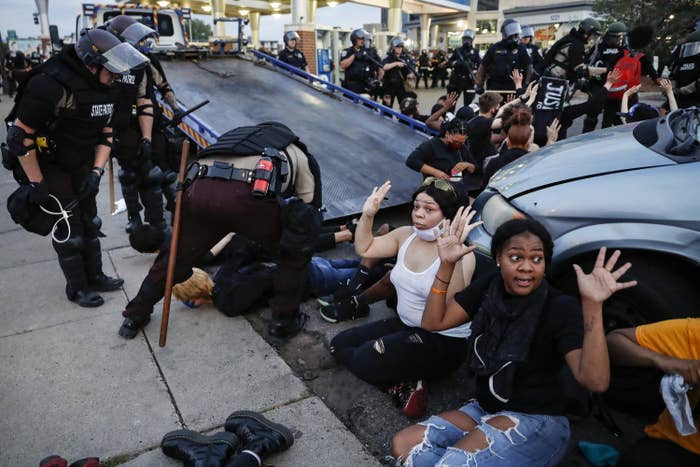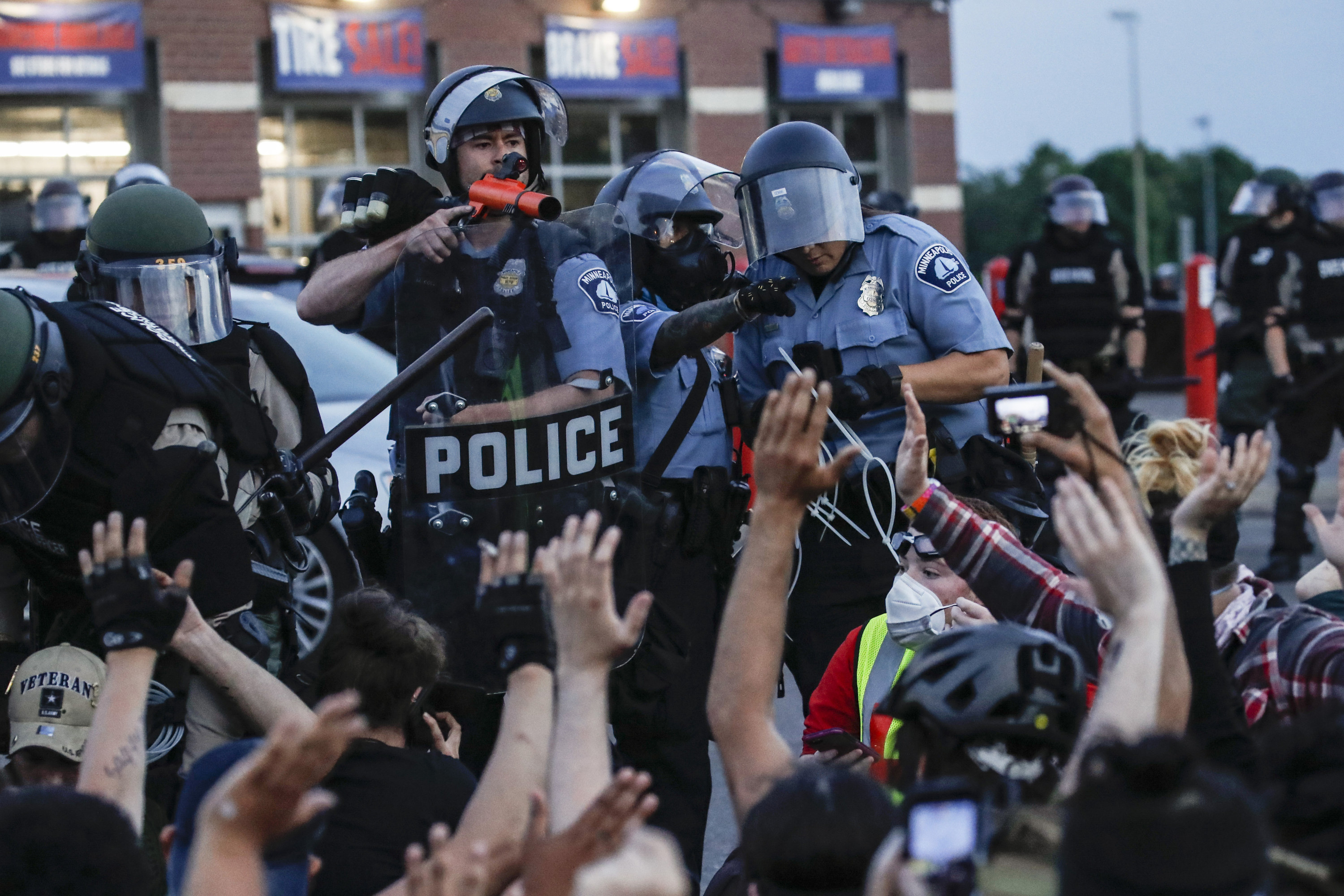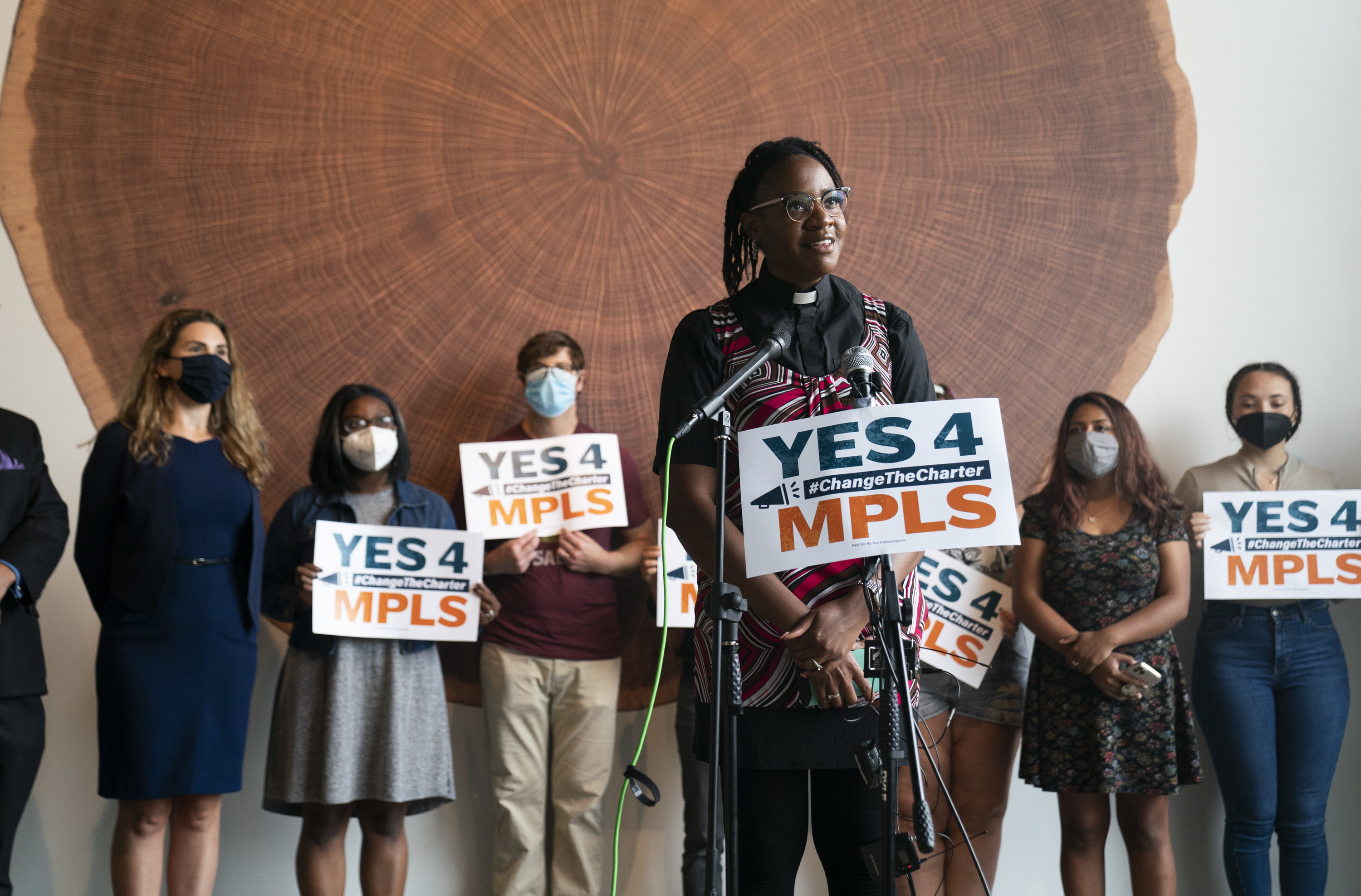
MINNEAPOLIS — When Corenia Smith thinks about what she's fighting for in this year's election, she thinks about the person she found overdosing outside her apartment one day last year after brunch. She remembers thinking of all the things that could go wrong if she called the police and administering Narcan herself instead.
That, said Smith, who serves as the campaign manager for Yes 4 Minneapolis and is also a licensed practical nurse, is an example of a person who didn’t need an armed police officer. Smith and a broad group of activists and groups make up the coalition working to convince the city’s electorate that they should vote "yes" on the second city question on their ballot in Tuesday’s election, which asks whether they want to replace the city’s police department with a “Department of Public Safety.”
If the ballot measure were to succeed, the department would be replaced with an expanded department that goes beyond traditional policing to pursue a more “comprehensive” approach to public safety (like mental health professionals responding to mental health crises), who would then all be under the oversight of the mayor and City Council. The language would also get rid of a “minimum funding requirement” for police.
“What’s at stake when we have these races is change, or maintaining the status quo. And I think people have already indicated what it is that they want, and they don’t want to maintain the status quo,” Smith, now a former Minneapolis resident, said in an interview Sunday. “While this is hyper local, it does have national implications in the sense that this is a bellwether race.”
Minneapolis was ground zero for the reignition of the racial justice movement in 2020 after George Floyd, a Black resident, was murdered by former Minneapolis police officer Derek Chauvin, who was convicted in April of murder and manslaughter.
Floyd’s death, captured on camera and watched around the world, placed the Democratic city squarely in the center of the ongoing debate around police accountability and racism. The calls for reform ranged from abolitionist to restructuring, but most activists shared the view that a higher priority should be placed on funding community resources that could prevent the need for policing in the first place. Now, with this amendment on the ballot 17 months after Floyd’s death, Minneapolis will answer whether the push to reallocate police budgets has any political momentum. The brief amendment question has become a Rorschach test for Democrats and residents on what the path forward should look like.

“We need to unite around the specificity of solutions and concrete changes,” Mayor Jacob Frey, who is running for reelection at the top of the ticket, told BuzzFeed News in a phone interview on Monday. In addition to a mayoral race and City Council elections, there are two other amendment questions on the ballot that voters are considering, all of which have made for a contentious off-year election. “I’m obviously against question two, but regardless of what happens Tuesday, I’ll honor the will of the people, and I’ll work towards making the new department a reality as functional and as effective as we can,” he said.
The contest appears to be close, as a September poll of likely voters conducted by a coalition of media outlets showed. High-profile Democrats have also split: Sen. Amy Klobuchar, a former presidential candidate, and US Rep. Angie Craig, who serves a competitive district in the suburbs of Minneapolis, have come out against; US Rep. Ilhan Omar, a House progressive and member of the Squad, and Minnesota Attorney General Keith Ellison have weighed in for it. A Lot of Money has poured in. And the animosity on both sides toward each other is almost tangible.
Both camps have aggressively been trying to win over support from voters for their position, setting up canvass operations and other get-out-the-vote initiatives.
“We try our best to be approachable, so it’s not just like, ‘Oh, if you agree with 'yes,' talk to us. Or get ready for a debate, or get ready for a contentious conversation,’” said Shanna Woods, as she canvassed a northeast neighborhood on Halloween for the Yes 4 Minneapolis campaign, bundled in a Black Lives Matter hat and fleece vest. “We’re just like, ‘Hey, let’s talk.’”
What she’s loved, she said, is having conversations with people who have the impression that what the amendment would do is defund the police, which she tells them is not the goal. Instead, she tells them it’s about expanding the resources available for people who need help, and police are a part of that. For the "yes" campaign, much of the strategy has been in recentering the conversation around safety, versus whether they are for or against defunding.
“Defund” is a word that has become a headache for Democrats trying to move away from “abolish the police” messaging that grew out of the Floyd protests and was ultimately used by Republicans against Democrats in 2020’s elections. In 2020, a majority of the Minneapolis City Council infamously stood in Powderhorn Park and vowed to dismantle the police.
“In retrospect, not a great word to use,” ceded Phillipe Cunningham, a City Council member who represents one of the most diverse and poorest wards in the city, and who supports "yes" on the question, over coffee the morning before Election Day. He tries to encourage people to instead say reimagine. But he asked Democrats: “Don’t fall into their messaging. Don’t fall into their narrative because you’re allowing them to control how we’re talking about this issue.”

The debate over the amendment has served as a microcosm of the national fight that’s unfolded over police reform. Critics of the amendment argued it would create a confusing chain of command that would leave the department answering to 14 different bosses. The opposition has also argued that the phrasing of the amendment is too vague and insufficient to create real change by not offering a concrete replacement.
The language itself became an issue at one point for the City Council: Kicked back by a district judge, they had to rephrase the wording. It was then rejected again, and got a review by the state Supreme Court, which reversed the decision and said it was clear enough for voters.
The question appears on the ballot with an explanatory note: “This amendment would create a Department of Public Safety combining public safety functions through a comprehensive public health approach to be determined by the Mayor and Council. The department would be led by a Commissioner nominated by the Mayor and appointed by the Council. The Police Department, and its chief, would be removed from the City Charter. The Public Safety Department could include police officers, but the minimum funding requirement would be eliminated.”

An FAQ recently drafted by city staff and shared by City Council members explaining what would happen if the amendment were to pass said that the current chain of command would remain in place, and that an interim commissioner would need to be appointed by the time the charter language took effect 30 days after the election. It noted that a new department of public safety would still have police officers.
“Part of our concern with this amendment is that it is capitalizing on a moment of crisis where people are looking for real meaningful change, but it’s not presenting a plan for bringing about that kind of real, meaningful change,” said Leili Fatehi, campaign manager for the All of Mpls campaign, which is opposing the measure. Fatehi noted that the charter amendment leaves out specifics on police recruiting, training, and discipline. “The thing that I especially think is important for people outside of Minneapolis to understand is this fact that the question between 'yes' and 'no' is not one of status quo versus change. That virtually nobody is advocating for the status quo.”
In the early afternoon a day before the election, the site of Floyd’s death, where the debate around policing picked up serious traction, was hauntingly quiet. It has become a decorated landmark — there is an angel outlined on the ground where Floyd died; the gas station across the street is shuttered and adorned with protest messages; a shed is set up as a little library and prominently featured Ta-Nehisi Coates’ The Water Dancer on a top shelf; and a firepit surrounded by empty benches still filled the air with the smell of a recent fire when the breeze hit it just so.

